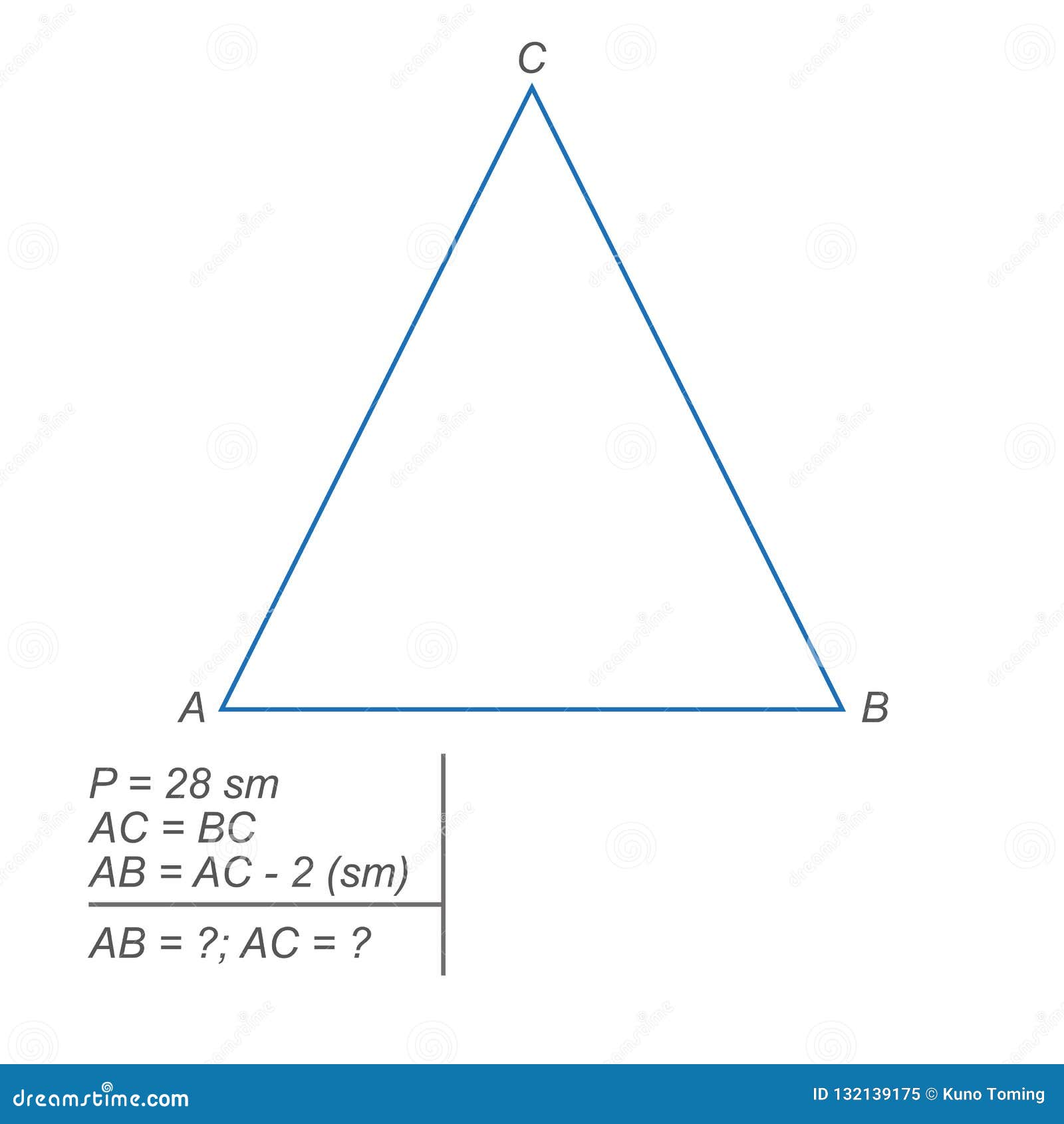

- #Find perimeter of isosceles triangle base only how to
- #Find perimeter of isosceles triangle base only plus
Since AD is perpendicular to the base, it forms 90 degree angles with the base. Let y equal the length of AB and the length of AC Those are BD and CD which are each equal to 7. Since this is an isosceles triangle, AD splits the base into 2 equal parts.

With only this information, you can construct a limitless number of isosceles triangles.Ĭheck out the attached picture to see what I mean.ĪD is a perpendicular dropped from angle A intersecting with the base at D. You are given the length of the base of the isosceles triangle. The area A is equal to the square root of the semiperimeter s times semiperimeter s minus side a times semiperimeter s minus a times semiperimeter s minus base b.You can put this solution on YOUR website! You can find the area of an isosceles triangle using the formula: The semiperimeter s is equal to half the perimeter. Given the perimeter, you can find the semiperimeter.
#Find perimeter of isosceles triangle base only plus
Thus, the perimeter p is equal to 2 times side a plus base b. You can find the perimeter of an isosceles triangle using the following formula: Given the side lengths of an isosceles triangle, it is possible to solve the perimeter and area using a few simple formulas.

The vertex angle β is equal to 180° minus 2 times the base angle α. Use the following formula to solve the vertex angle: The base angle α is equal to quantity 180° minus vertex angle β, divided by 2. Use the following formula to solve either of the base angles: Given any angle in an isosceles triangle, it is possible to solve the other angles.
#Find perimeter of isosceles triangle base only how to
How to Calculate the Angles of an Isosceles Triangle The side length a is equal to the square root of the quantity height h squared plus one-half of base b squared. Use the following formula also derived from the Pythagorean theorem to solve the length of side a: The base length b is equal to 2 times the square root of quantity leg a squared minus the height h squared. Use the following formula derived from the Pythagorean theorem to solve the length of the base side: Given the height, or altitude, of an isosceles triangle and the length of one of the sides or the base, it’s possible to calculate the length of the other sides. How to Calculate Edge Lengths of an Isosceles Triangle We have a special right triangle calculator to calculate this type of triangle. Note, this means that any reference made to side length a applies to either of the identical side lengths as they are equal, and any reference made to base angle α applies to either of the base angles as they are also identical. When references are made to the angles of a triangle, they are most commonly referring to the interior angles.īecause the side lengths opposite the base angles are of equal length, the base angles are also identical. The two interior angles adjacent to the base are called the base angles, while the interior angle opposite the base is called the vertex angle. The equilateral triangle, for example, is considered a special case of the isosceles triangle. However, sometimes they are referred to as having at least two sides of equal length. Isosceles triangles are typically considered to have exactly two sides of equal length. The third side is often referred to as the base.

An isosceles triangle is a triangle that has two sides of equal length.


 0 kommentar(er)
0 kommentar(er)
